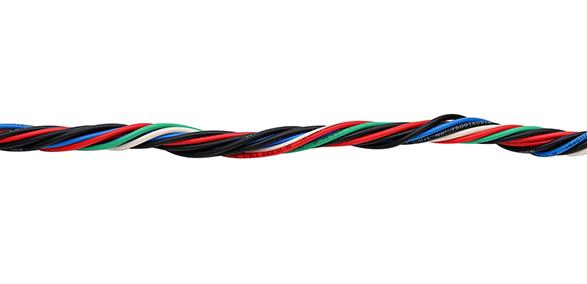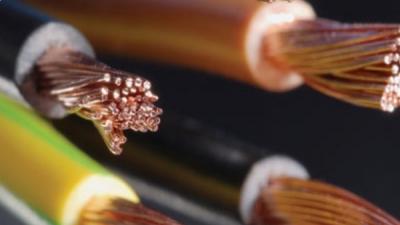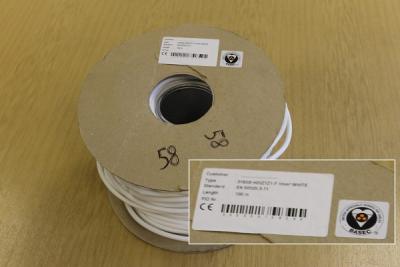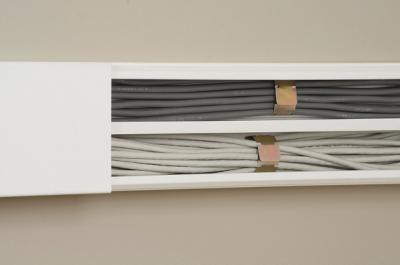Providing a solution to the Construction Products Regulations on cables

The Construction Products Regulation (CPR) lays down rules for the marketing of construction products and uses a common technical language to assess product performance. The aim is provide reliable information to construction professionals so that they can compare the performance of products from different manufacturers in different countries.
Confusion and uncertainty has been evident in a number of areas, but the biggest question of all has been ‘What class(es) of reaction to fire performance must be used?’
Following the CPR implementation on July 1st 2017 the British Cable Association has created related guidance and recommendations for specifiers, designers and installers.
As there are currently no UK legal requirements for any specific class, designers and specifiers are free to select any class so long as their decision ‘reflects the demands of other applicable regulations’. This is because the CPR, as a statutory regulation, automatically applies throughout the EU and requires manufacturers to prepare a Declaration of Performance (DoP) and apply CE marking to their products. Both of these must show the class of reaction to fire performance. For cables the CE marking must be on the labelling or equivalent. However CPR doesn’t define which class of reaction to fire performance is applicable to a particular installation. That is for each member state to determine through their own Regulations, i.e. England & Welsh Building Regulations and Scottish Building Standards.
The Ministry of Housing, Communities and Local Government (MHCLG formerly DCLG) who set the Building Regulations aren’t looking to make any prescriptive legal requirement on reaction to fire for cables presently through amendments to The Building Regulations 2010. The responsibility to make an appropriate choice therefore rests with the marketplace, especially specifiers and end users.
Voluntary guidance can be found in British Standards, some of which may be used as ways of demonstrating compliance with parts of the Building Regulations. In particular, BS 7671 (the IET Wiring Regulations), may be used to demonstrate compliance with Part P (electrical safety – dwellings) of the Building Regulations. For non-dwellings, the Electricity at Work Regulations would apply, with which a similar relationship exists with BS 7671. It must again be emphasised that both BS 7671 and BS 6701 are not legal requirements and this has been confirmed by MHCLG but if you use an alternative solution for your installations without reference to these publications you may still need to demonstrate compliance with the Building Regulations and the Electricity at Work Regulations by other means.
BCA recommendations
It’s all rather confusing really and the BCA have now published the second edition of the British Cables Association Guidance to specifiers to throw more light on the options available. In particular they make a number of recommendations that recognise the wide range of buildings and construction works that are embraced by CPR, these include:
1. Always specify that cables must have the CE marking according to CPR, accompanied by a Declaration of Performance (DoP). NOTE: It is the responsibility of the specifier/purchaser/user to be satisfied that the information on the DoP is accurate and authentic. Some examples of incorrect and misleading DoPs have already been seen, including those where the declared class is higher than may be expected, and cannot be verified.
2. Take due note of the relationship between the statutory regulation, and relevant documents that are classed as guidance, such as BS 7671.
3. Specify cables of class Eca or higher.
4. Preferably use cables described as low fire hazard or equivalent, in particular where fire safety requirements are high or very high.
5. Ensure that low fire hazard cables above class Eca include the additional classifications for smoke and acidity (LSHF, LSOH, OHLS, LSNH etc) and, for particular applications, flaming droplets.
6. Avoid cables classified as Fca, as they are likely to burn uncontrollably in a fire.
7. In case of doubt, consult the manufacturer.
Further information
Find out more at:
http://www.bcauk.org/about-us/construction-product-regulation-cpr
http://www.bcauk.org/application/files/8515/2335/5815/CPR_Guide_to_specifiers_-_Ed_2.pdf
Image courtesy of General Cables
Sign up to the building bulletin newsletter
Over 48,000 construction professionals have already signed up for the LABC Building Bulletin.
Join them and receive useful tips, practical technical information and industry news by email once every 6 weeks.
Subscribe to the Building Bulletin




Comments
Add new comment